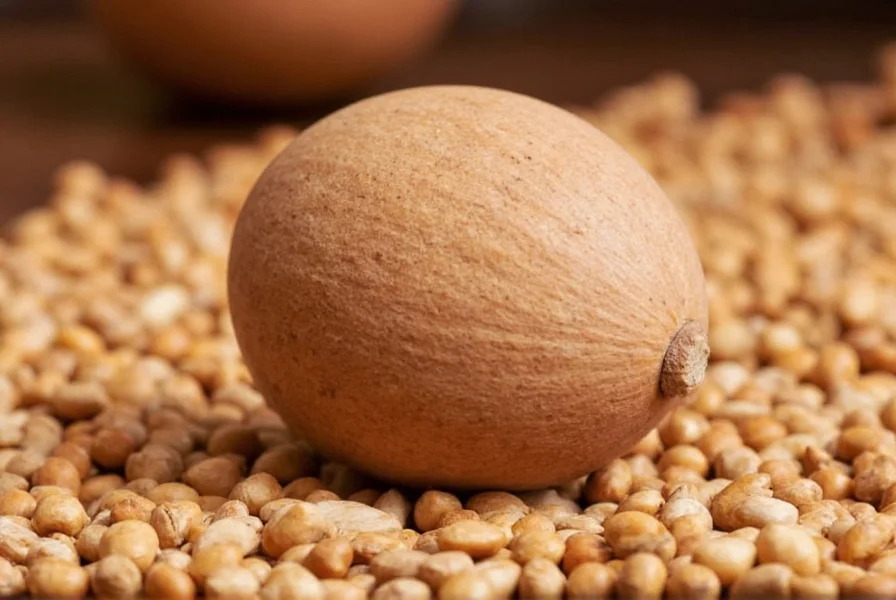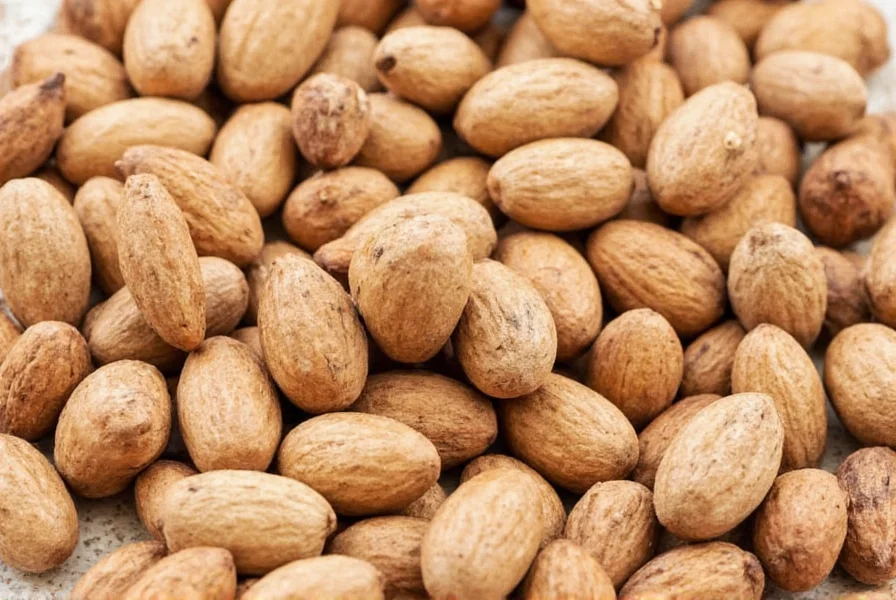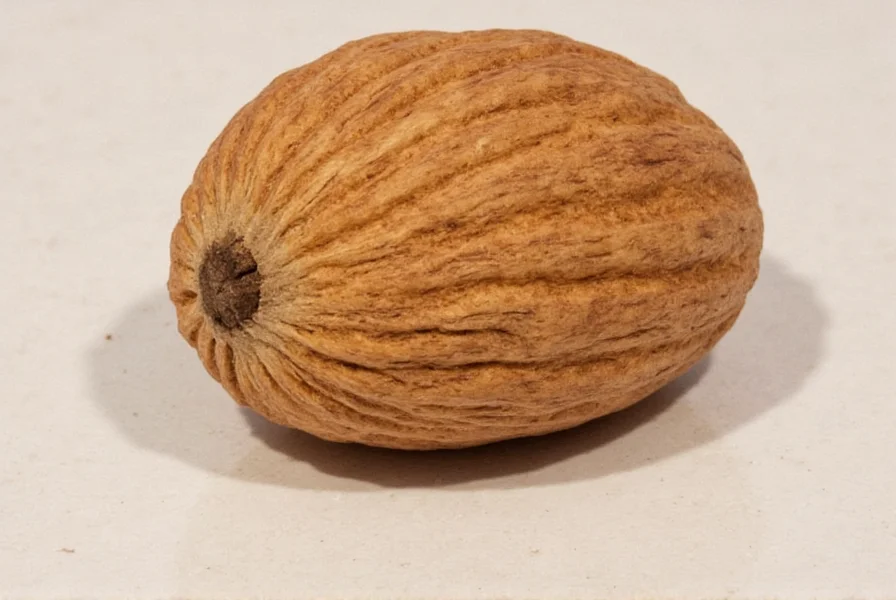Many home cooks and allergy sufferers wonder is nutmeg a nut due to its misleading name. Understanding this distinction matters significantly for culinary use and dietary safety. Nutmeg comes from the seed of an evergreen tree native to the Banda Islands in Indonesia, while true nuts like almonds, walnuts, and cashews develop differently botanically.
Botanical Classification: What Exactly Is Nutmeg?
Nutmeg originates from the Myristica fragrans tree, which produces a peach-like fruit. Inside this fruit lies a seed surrounded by a red, lacy covering. The seed itself is nutmeg, while the red covering becomes mace when dried. This relationship explains why nutmeg and mace share similar flavor profiles but differ in intensity.
The confusion about is nutmeg considered a nut stems from historical naming conventions rather than botanical accuracy. Early European traders named it "nutmeg" because the seed's appearance resembled a small nut when dried. However, from a scientific perspective, nutmeg lacks the defining characteristics of true nuts.
Nutmeg vs. True Nuts: Key Differences
| Characteristic | Nutmeg | True Tree Nuts |
|---|---|---|
| Botanical Classification | Seed | Fruit (hard-shelled) |
| Plant Family | Myristicaceae | Various (e.g., Juglandaceae for walnuts) |
| Allergen Profile | Generally safe for nut allergy sufferers | Common allergens |
| Structure | Single seed inside fruit | Hard shell surrounding seed |
Nutmeg Allergy Concerns Explained
When researching is nutmeg safe for nut allergies, most medical authorities confirm that nutmeg doesn't trigger reactions in people with tree nut allergies. The American College of Allergy, Asthma, and Immunology states that seed spices like nutmeg, sesame, and mustard belong to different plant families than tree nuts.
However, rare cases of nutmeg allergy do exist, but these represent sensitivity to the seed itself rather than cross-reactivity with tree nuts. If you have severe allergies, consult your allergist before introducing new spices, but rest assured that nutmeg is not classified as a tree nut by food safety organizations.
Culinary Uses and History of Nutmeg
Nutmeg has been prized since ancient times, with evidence of its use dating back to 2300 BCE in Sri Lankan burial sites. During the Middle Ages, it became so valuable that European powers fought wars to control its production. Today, this versatile spice enhances both sweet and savory dishes—from pumpkin pie to béchamel sauce.
Chefs appreciate nutmeg's warm, slightly sweet flavor that complements dairy-based sauces particularly well. For the best flavor, use whole nutmeg and grate it fresh as needed. Pre-ground nutmeg loses its aromatic compounds more quickly.

Storage and Selection Tips
When selecting nutmeg, choose heavy, firm seeds without cracks. Store whole nutmeg in an airtight container away from light and moisture, where it will maintain potency for up to two years. Ground nutmeg retains quality for about six months under similar conditions.
Understanding the difference between nutmeg and actual nuts helps home cooks use this spice confidently. Its unique flavor profile makes it indispensable in many traditional recipes worldwide, from Dutch speculaas cookies to Indian garam masala blends.
Common Misconceptions About Nutmeg
Several myths persist about this spice. Some believe nutmeg contains psychoactive compounds that can cause hallucinations in large doses—while technically true, consuming enough nutmeg to experience these effects would cause severe gastrointestinal distress first. Another misconception suggests nutmeg grows on nut trees, but as we've established, it comes from a completely different plant family.
When exploring is nutmeg a nut or seed, the answer remains clear: it's definitively a seed. This botanical accuracy matters for both culinary precision and dietary safety, especially for those managing food allergies.

Is nutmeg safe for people with tree nut allergies?
Yes, nutmeg is generally safe for people with tree nut allergies because it's a seed, not a nut. Nutmeg comes from the Myristica fragrans tree and belongs to a different botanical family than tree nuts like almonds or walnuts. However, if you have severe allergies, consult your allergist before consuming.
What's the difference between nutmeg and mace?
Nutmeg and mace come from the same fruit. Nutmeg is the seed itself, while mace is the bright red, lacy covering (aril) that surrounds the seed. Mace has a more delicate, slightly sweeter flavor than nutmeg and is often used in lighter-colored dishes where the dark specks of nutmeg would be visible.
Can you be allergic to nutmeg?
Yes, though rare, some people can have allergies to nutmeg itself. This is different from tree nut allergies since nutmeg is a seed. Nutmeg allergy symptoms may include itching, hives, or digestive issues. If you suspect a nutmeg allergy, consult an allergist for proper testing and diagnosis.
Why is it called nutmeg if it's not a nut?
The name "nutmeg" comes from the seed's appearance when dried—it resembles a small nut. Early European traders in the 16th century named it based on this visual similarity, though botanically it's a seed. The term likely derives from the Old French "nois muscade" meaning "musky nut," referring to its distinctive aroma.
How can I tell if my nutmeg is fresh?
Fresh whole nutmeg should feel heavy for its size and have a strong, sweet aroma when scratched. When grated, it should produce a fine, oily powder with a rich brown color. If your nutmeg smells faint or musty, or if it's light in weight, it has likely lost its potency and should be replaced.











 浙公网安备
33010002000092号
浙公网安备
33010002000092号 浙B2-20120091-4
浙B2-20120091-4